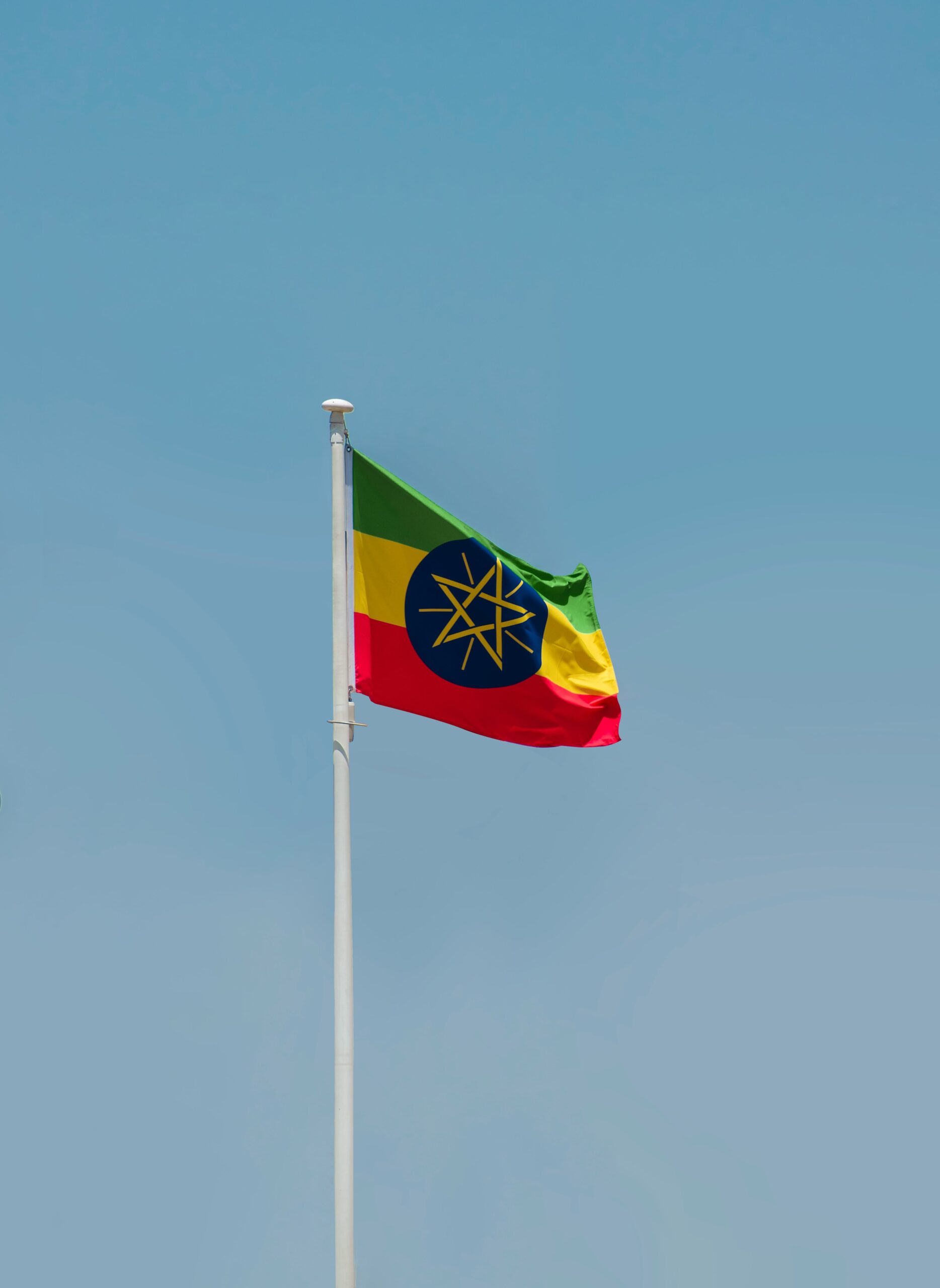Lalibela Travel Guide
Top Attractions to Visit in Lalibela
When planning a trip to Lalibela, Ethiopia, there are several remarkable attractions that you simply can’t miss. One of the most iconic sites in Lalibela is the rock-hewn churches, a collection of magnificent structures carved out of solid rock centuries ago. These churches, including Bete Giyorgis, are a UNESCO World Heritage Site and display incredible architectural and historical significance.
Another must-visit location is the Church of St. George. This monolithic church is one of the best-preserved in Lalibela and is renowned for its unique cross-shaped design. The intricate details and symbolism found throughout the church make it a fascinating site for history and architecture enthusiasts.
For a glimpse into Ethiopia’s rich history, a visit to the Church of Medhane Alem is highly recommended. As one of the largest rock-hewn churches in Lalibela, it offers visitors a chance to explore religious traditions and cultural practices dating back centuries.
If you’re a nature enthusiast, a trip to the beautiful Asheton Maryam Monastery is a must. Situated atop a rugged mountain, this monastery provides breathtaking views of the surrounding landscape, making it a perfect spot for photography and reflection.
Exploring the Lalibela market is also a great way to experience the local culture and interact with friendly residents. Here, you can find unique handicrafts, colorful fabrics, and traditional Ethiopian souvenirs to bring back home.
Lalibela offers a unique blend of history, culture, and natural beauty that will leave a lasting impression on any traveler. Be sure to include these top attractions in your Lalibela travel itinerary for an unforgettable experience.
Best Time to Travel to Lalibela
When planning a trip to Lalibela, it’s crucial to consider the best time to visit this fascinating destination to make the most of your experience. Lalibela, known for its rock-hewn churches and unique landscapes, has a distinct climate that can influence your travel plans. Understanding the ideal time to explore Lalibela will help you enjoy your trip to the fullest.
One of the prime seasons to visit Lalibela is during the dry months, which run from October to March. These months offer pleasant weather conditions with minimal rainfall, making it an excellent time to explore the outdoor attractions, go trekking, and visit the historic churches without the interruption of heavy rains. The clear skies during this period also provide fantastic opportunities for photography and capturing the beauty of Lalibela.
If you prefer to avoid crowds and experience Lalibela in a more serene setting, consider visiting during the shoulder seasons of April to May or September. During these months, the tourist traffic is relatively low, allowing you to enjoy the attractions peacefully and interact more with the locals. However, be prepared for some rainfall during these shoulder months, so packing appropriate rain gear is advisable.
On the other hand, the rainy season in Lalibela falls between June and August. While this period experiences heavier rainfall, it also brings lush greenery to the region, creating a unique and picturesque landscape. If you don’t mind the occasional showers and want to witness Lalibela’s natural beauty at its peak, traveling during the rainy season can be a rewarding experience.
Ultimately, the best time to travel to Lalibela depends on your preferences and the type of experience you seek. Whether you choose to visit during the dry season for optimal weather conditions or during the quieter shoulder seasons for a more intimate exploration, Lalibela promises a memorable journey filled with rich history and cultural discoveries. Plan your trip wisely to make the most of this enchanting destination in Ethiopia.
Exploring Local Cuisine and Food Recommendations in Lalibela
When visiting Lalibela, Ethiopia, exploring the local cuisine is a must-do experience that immerses you in the rich cultural heritage of the region. Lalibela offers a unique blend of flavors and dishes that reflect its history and traditions. One of the must-try dishes is "Doro Wat," a spicy chicken stew that is considered Ethiopia’s national dish. This flavorful stew is made with chicken, berbere spice mix, onions, garlic, and other spices, served with injera, a traditional sourdough flatbread.
In addition to Doro Wat, you should also try "Kitfo," a dish made of minced raw beef, marinated in mitmita (a spicy chili powder), and niter kibbeh (a spiced clarified butter). Kitfo is often served with ayib (a cottage cheese) and greens. Another popular Ethiopian dish to savor in Lalibela is "Tibs," which consists of sautéed meat (such as beef, lamb, or goat) mixed with vegetables, onions, garlic, and various spices.
For a unique dining experience, consider visiting one of the local markets in Lalibela, where you can find an array of fresh fruits, vegetables, spices, and traditional ingredients. Engaging with the local vendors and trying out fresh produce can provide insight into the vibrant food culture of Lalibela. Don’t miss the opportunity to taste Tej, a traditional Ethiopian honey wine, and experience the sweet and tangy flavors unique to the region.
In Lalibela, you’ll find a variety of eateries ranging from humble street food stalls to cozy restaurants offering authentic Ethiopian cuisine. Be sure to explore different dining options to sample a wide range of flavors and dishes. Whether you’re a food enthusiast or simply looking to savor new tastes, Lalibela’s culinary scene promises a memorable gastronomic journey that celebrates the essence of Ethiopian tradition and hospitality.
Cultural Festivals and Events in Lalibela
Lalibela, a town in Ethiopia known for its rock-hewn churches, is also a place where vibrant cultural festivals and events take place throughout the year. These festivities offer visitors a unique glimpse into the rich traditions and heritage of the region, making a visit to Lalibela even more memorable.
One of the most significant cultural events in Lalibela is the Timkat Festival, which celebrates the baptism of Jesus in the Jordan River. This festival, usually held in January, features colorful processions, music, dance, and prayers. The highlight of the Timkat Festival is the reenactment of the baptism ceremony, where priests carry beautifully decorated umbrellas and crosses while chanting hymns.
Another notable event in Lalibela is the Meskel Festival, commemorating the discovery of the True Cross by Saint Helena, the mother of Emperor Constantine. During this festival, which takes place in September, thousands of pilgrims and locals gather to light a massive bonfire, symbolizing the bonfire that led Queen Helena to the True Cross. The Meskel Festival also includes traditional dances, religious ceremonies, and feasting.
For those interested in traditional music and dance, the Genna Festival in Lalibela is a must-see. Celebrated on Christmas Eve according to the Ethiopian Orthodox calendar (January 6th), the Genna Festival features spirited dance performances, drumming, and chanting. Visitors can join the locals in the festivities, enjoying traditional delicacies such as injera (a sourdough flatbread) and doro wat (spicy chicken stew).
In addition to these major festivals, Lalibela hosts various religious ceremonies, including church services, processions, and pilgrimages throughout the year. These events provide a glimpse into the deeply rooted spirituality and faith that define the local community. Visitors are welcomed to participate respectfully in these religious observances, gaining a deeper understanding of the cultural fabric of Lalibela.
Exploring the cultural festivals and events in Lalibela offers a unique opportunity to immerse oneself in the traditions and customs of this historic town. Whether witnessing the grandeur of the Timkat Festival or partaking in the joyous celebrations of the Genna Festival, visitors to Lalibela are sure to create lasting memories of these enriching cultural experiences.
Insider Tips for Exploring Lalibela Efficiently
When traveling to Lalibela, it’s essential to plan your trip efficiently to make the most of your time and experience all that this unique destination has to offer. Here are some insider tips to help you explore Lalibela effectively:
Understanding the Layout
Lalibela is famous for its rock-hewn churches, which are divided into two main groups – the Eastern and Western groups. Start your exploration with the Northern and Western clusters as they are closer together, then proceed to the Southern and Eastern clusters. This way, you can visit the sites sequentially and minimize backtracking.
Hiring a Local Guide
To gain a deeper understanding of the history and significance of the churches, consider hiring a local guide. They can provide valuable insights, historical context, and hidden gems that you might overlook if exploring independently. A guide can also help you navigate the complex layout of the churches.
Visiting at the Right Time
Lalibela can get crowded, especially during peak tourist seasons. To avoid the crowds and experience the churches in a more serene setting, plan your visit early in the morning or later in the afternoon. This way, you can appreciate the beauty and tranquility of the churches without the hustle and bustle of large tour groups.
Packing Essentials
Make sure to pack essentials such as comfortable walking shoes, a hat, sunscreen, and plenty of water, as exploring Lalibela involves a fair amount of walking and exposure to the sun. Dress modestly when visiting the churches out of respect for the religious sites and local customs.
Engaging with the Locals
Take the time to interact with the locals in Lalibela to learn more about their way of life, traditions, and culture. Ethiopians are known for their warmth and hospitality, and engaging with them can enrich your travel experience and provide a unique perspective on the destination.
Trying Local Cuisine
Don’t miss the opportunity to sample traditional Ethiopian cuisine while in Lalibela. From injera (a sourdough flatbread) to tibs (sautéed meat), the local dishes are flavorful and varied. Be sure to explore local eateries and markets to savor authentic Ethiopian flavors during your stay.
By incorporating these insider tips into your travel plans, you can explore Lalibela efficiently and make the most of your visit to this fascinating destination.
Conclusion
As you plan your trip to Lalibela, consider visiting the top attractions that make this Ethiopian town a remarkable destination. From the iconic rock-hewn churches to the breathtaking scenery of the Lasta Mountains, Lalibela offers a unique blend of history and natural beauty. Make sure to explore the Lalibela Monolithic Churches, a UNESCO World Heritage Site, and witness the incredible architectural feats of the 12th-century rulers.
When it comes to the best time to travel to Lalibela, aim for the dry season between October and March. During this period, you can avoid the rainy season and enjoy mild temperatures for exploring the outdoor attractions comfortably. Keep in mind that Lalibela can get crowded during peak tourist seasons, so planning ahead and booking accommodations in advance is advisable.
For a true taste of Ethiopian culture, be sure to indulge in the local cuisine and food recommendations in Lalibela. Try traditional dishes like injera, a sourdough flatbread, and doro wat, a spicy chicken stew. Coffee lovers will delight in the rich flavors of Ethiopian coffee, often served in elaborate ceremonies that highlight the country’s coffee culture.
Immerse yourself in the vibrant cultural festivals and events that take place in Lalibela throughout the year. Witness the mesmerizing Timkat celebration, a religious festival that commemorates the baptism of Jesus in the Jordan River. During this festival, locals gather for colorful processions, music, and dance, creating a lively atmosphere filled with joy and spirituality.
As you explore Lalibela, consider some insider tips to make the most of your visit. Hire a local guide to gain deeper insights into the history and significance of the rock-hewn churches. Wear comfortable shoes for walking and hiking around the rugged terrain, and don’t forget to bring sunscreen and a hat to protect yourself from the strong African sun. Remember to respect local customs and traditions, such as dressing modestly when visiting religious sites.
A journey to Lalibela offers a memorable experience filled with ancient history, cultural richness, and natural splendor. By exploring the top attractions, visiting during the best time of year, savoring local cuisine, participating in cultural festivals, and following insider tips, you can embark on a rewarding adventure in this enchanting Ethiopian town. Plan your trip wisely, embrace the beauty of Lalibela, and create lasting memories that will stay with you long after you leave this remarkable destination.





